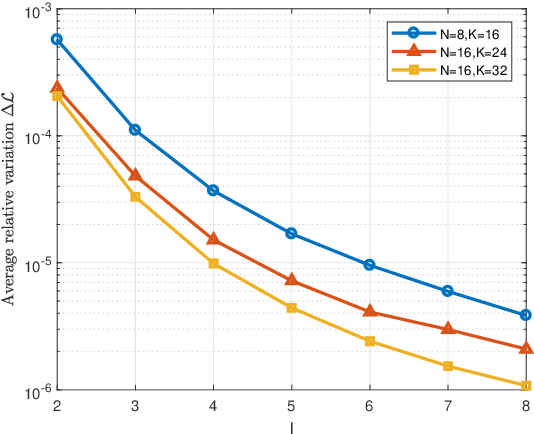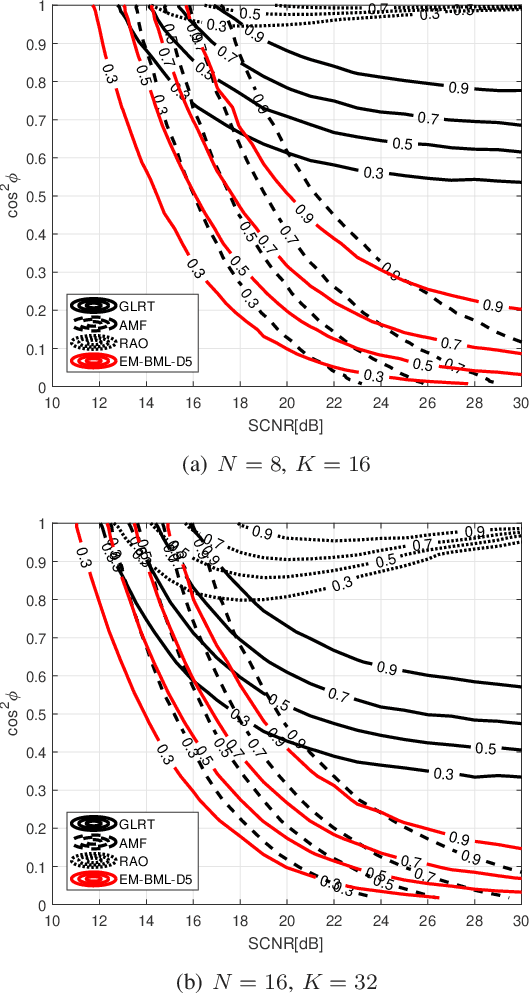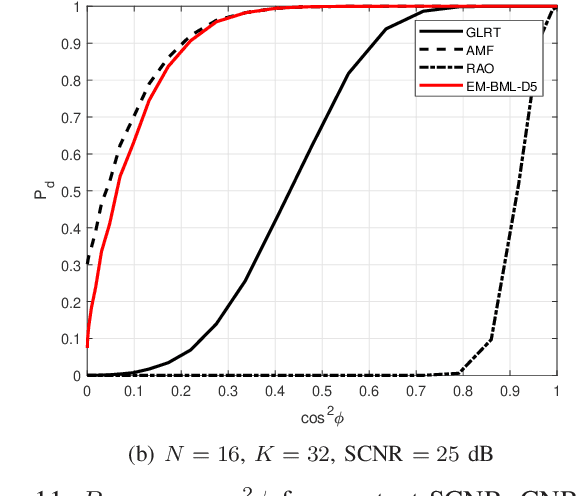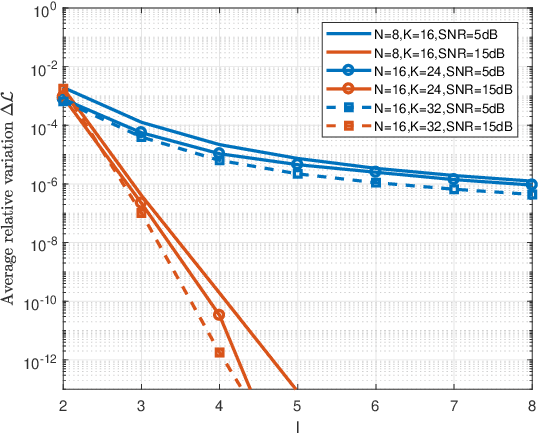Chaoran Yin
Joint ML-Bayesian Approach to Adaptive Radar Detection in the presence of Gaussian Interference
Mar 04, 2025



Abstract:This paper addresses the adaptive radar target detection problem in the presence of Gaussian interference with unknown statistical properties. To this end, the problem is first formulated as a binary hypothesis test, and then we derive a detection architecture grounded on the hybrid of Maximum Likelihood (ML) and Maximum A Posterior (MAP) approach. Specifically, we resort to the hidden discrete latent variables in conjunction with the Expectation-Maximization (EM) algorithms which cyclically updates the estimates of the unknowns. In this framework, the estimates of the a posteriori probabilities under each hypothesis are representative of the inherent nature of data and used to decide for the presence of a potential target. In addition, we prove that the developed detection scheme ensures the desired Constant False Alarm Rate property with respect to the unknown interference covariance matrix. Numerical examples obtained through synthetic and real recorded data corroborate the effectiveness of the proposed architecture and show that the MAP-based approach ensures evident improvement with respect to the conventional generalized likelihood ratio test at least for the considered scenarios and parameter setting.
Classification Schemes for the Radar Reference Window: Design and Comparisons
Feb 16, 2023



Abstract:In this paper, we address the problem of classifying data within the radar reference window in terms of statistical properties. Specifically, we partition these data into statistically homogeneous subsets by identifying possible clutter power variations with respect to the cells under test (accounting for possible range-spread targets) and/or clutter edges. To this end, we consider different situations of practical interest and formulate the classification problem as multiple hypothesis tests comprising several models for the operating scenario. Then, we solve the hypothesis testing problems by resorting to suitable approximations of the model order selection rules due to the intractable mathematics associated with the maximum likelihood estimation of some parameters. Remarkably, the classification results provided by the proposed architectures represent an advanced clutter map since, besides the estimation of the clutter parameters, they contain a clustering of the range bins in terms of homogeneous subsets. In fact, such information can drive the conventional detectors towards more reliable estimates of the clutter covariance matrix according to the position of the cells under test. The performance analysis confirms that the conceived architectures represent a viable means to recognize the scenario wherein the radar is operating at least for the considered simulation parameters.
 Add to Chrome
Add to Chrome Add to Firefox
Add to Firefox Add to Edge
Add to Edge